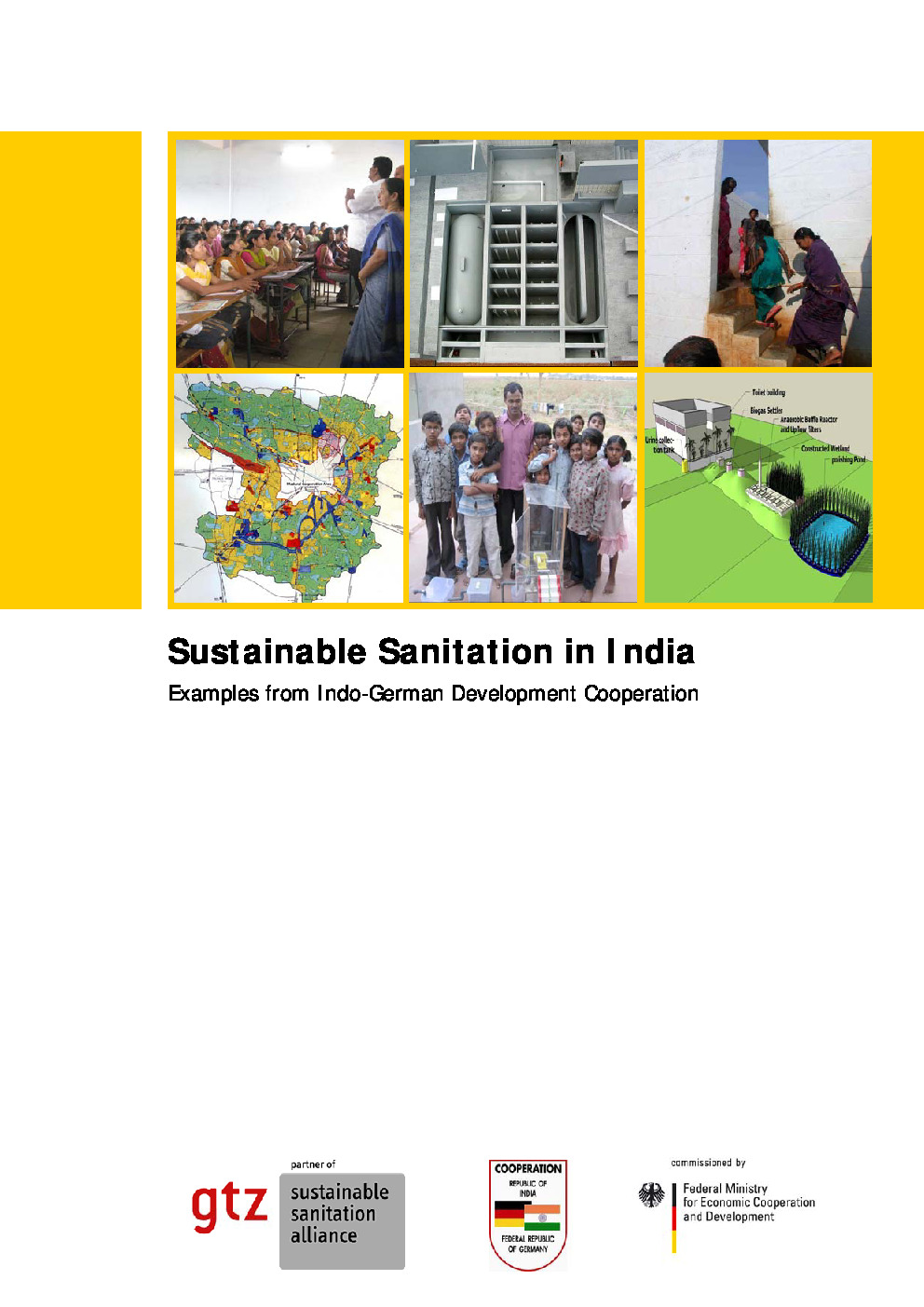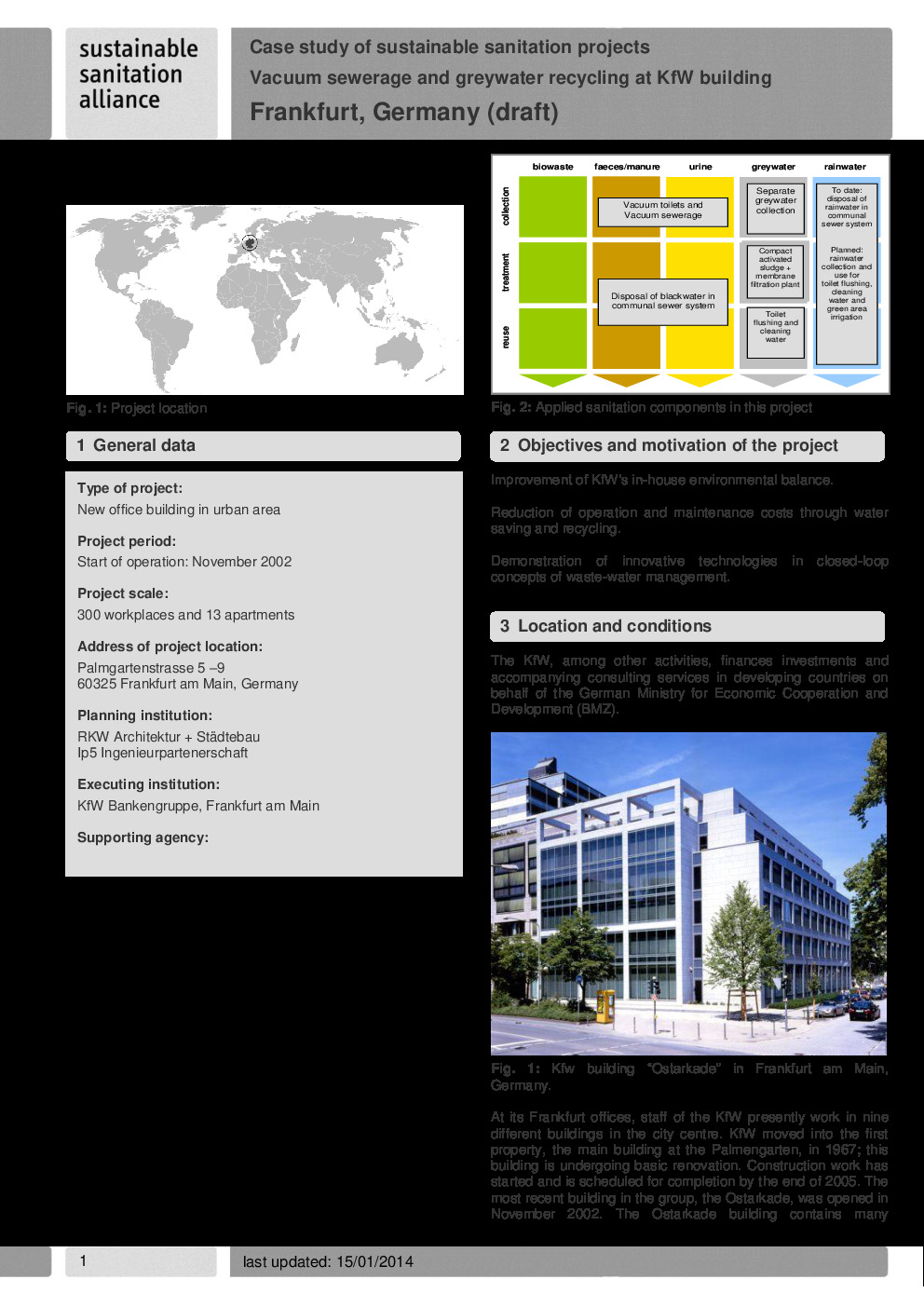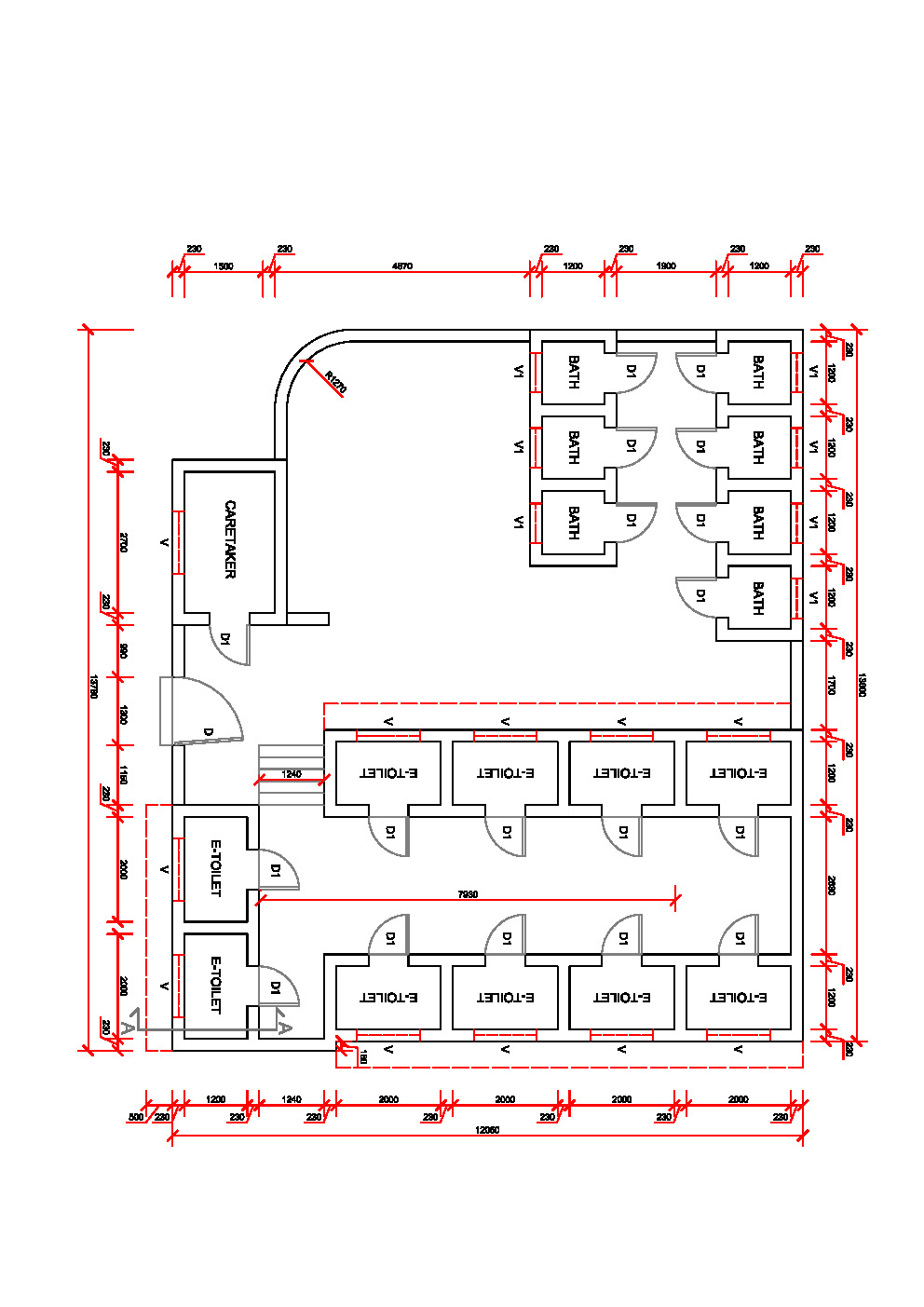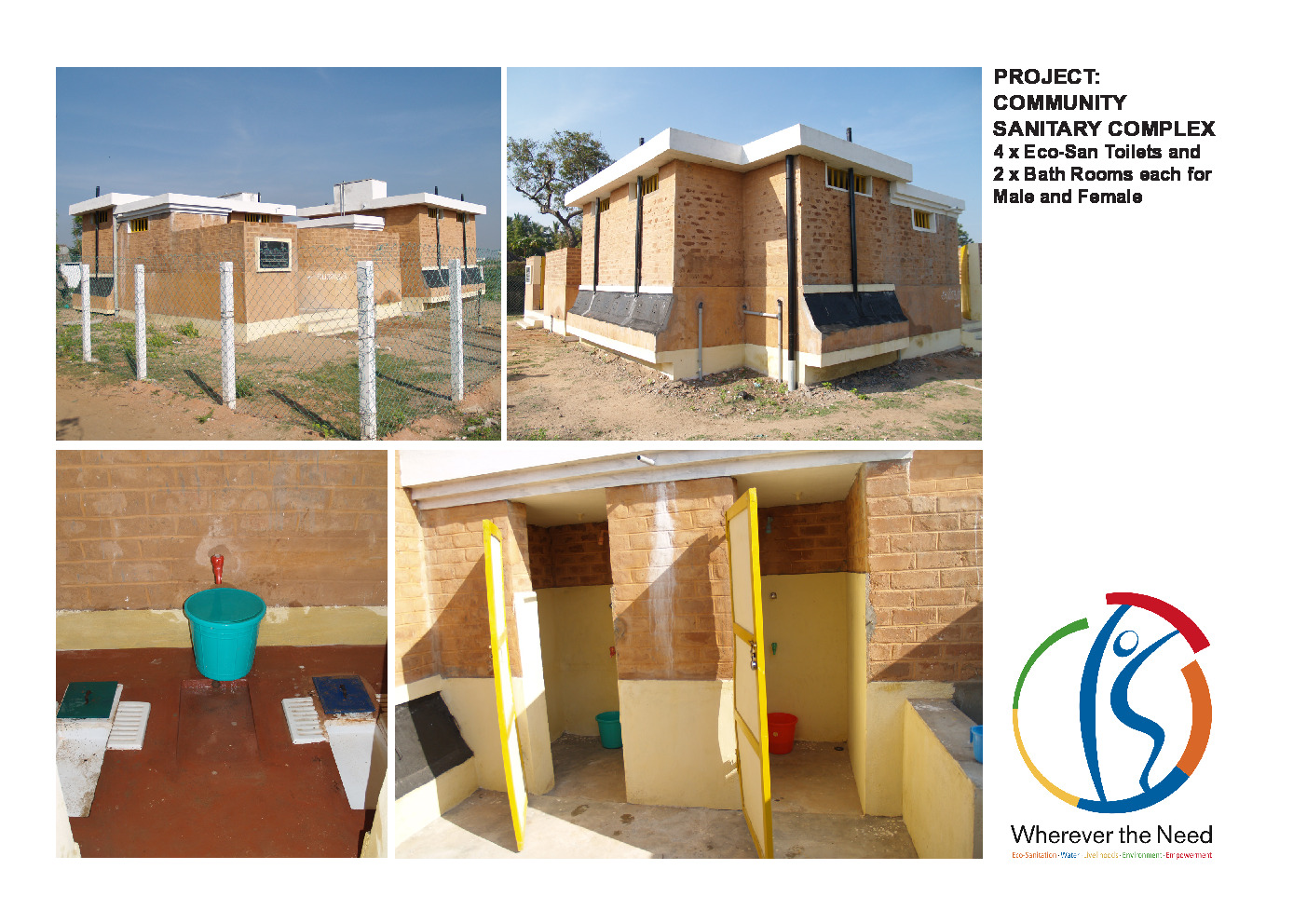-
Containment Collection and transport Treatment Disposal / Reuse
-
Capacity building Finance Information Education and Communication / Behavior Change Communication Infrastructure Policy and processes Technology
-
Access to sanitary toilets Better governance and planning Change in disease burden Collection efficiency of sanitation system Cost recovery Environmental sustainability through reuse, resource recovery, conservation Equity and social inclusion Private sector engagement Quantity of waste safely treated Sanitation practices of the supply side Sanitation practices of the end user
-
Seminar on Food Security on World Water Week in Stockholm, Sweden - Conference materials
Convenors: Food and Agriculture Organization of the United Nations (FAO), German Agency for Technical Cooperation (GTZ), International Fund for Agricultural Development (IFAD), International Centre for Soil Fertility and Agricultural Development (IFDC), International Water Management Institute (IWMI), Stockholm Environment Institute (SEI), Swedish University of Agricultural Sciences (SLU), United Nations Convention to Combat Desertifi cation (UNCCD) and Sustainable Sanitation Alliance (SuSanA)
-
Seminar on Food Security on World Water Week in Stockholm, Sweden - Conference materials
Convenors: Food and Agriculture Organization of the United Nations (FAO), German Agency for Technical Cooperation (GTZ), International Fund for Agricultural Development (IFAD), International Centre for Soil Fertility and Agricultural Development (IFDC), International Water Management Institute (IWMI), Stockholm Environment Institute (SEI), Swedish University of Agricultural Sciences (SLU), United Nations Convention to Combat Desertifi cation (UNCCD) and Sustainable Sanitation Alliance (SuSanA)
-
Seminar on Food Security on World Water Week in Stockholm, Sweden - Conference materials
Convenors: Food and Agriculture Organization of the United Nations (FAO), German Agency for Technical Cooperation (GTZ), International Fund for Agricultural Development (IFAD), International Centre for Soil Fertility and Agricultural Development (IFDC), International Water Management Institute (IWMI), Stockholm Environment Institute (SEI), Swedish University of Agricultural Sciences (SLU), United Nations Convention to Combat Desertifi cation (UNCCD) and Sustainable Sanitation Alliance (SuSanA)
-
Seminar on Food Security on World Water Week in Stockholm, Sweden - Conference materials
Convenors: Food and Agriculture Organization of the United Nations (FAO), German Agency for Technical Cooperation (GTZ), International Fund for Agricultural Development (IFAD), International Centre for Soil Fertility and Agricultural Development (IFDC), International Water Management Institute (IWMI), Stockholm Environment Institute (SEI), Swedish University of Agricultural Sciences (SLU), United Nations Convention to Combat Desertifi cation (UNCCD) and Sustainable Sanitation Alliance (SuSanA)
-
Seminar on Food Security on World Water Week in Stockholm, Sweden - Conference materials
Convenors: Food and Agriculture Organization of the United Nations (FAO), German Agency for Technical Cooperation (GTZ), International Fund for Agricultural Development (IFAD), International Centre for Soil Fertility and Agricultural Development (IFDC), International Water Management Institute (IWMI), Stockholm Environment Institute (SEI), Swedish University of Agricultural Sciences (SLU), United Nations Convention to Combat Desertifi cation (UNCCD) and Sustainable Sanitation Alliance (SuSanA)
-
Septic Tank Guidelines
A septic tank takes raw sewage in, allows the solids to settle (sludge) and allows the remaining liquid to flow into the surrounding soil by means of a soakaway. Scum on the surface is also prevented from leaving the tank. Microorganisms in the anaerobic environment in the tank digest the sludge and scum. The system consists of several stages, supply to the tank, the tank itself and the soak field. Septic tanks take sewage (grey water - washing and household waste and black water - sewage from latrines,) but not rainwater. Sludge volume is reduced by microbial action but still needs periodic emptying. Septic tanks provide partial treatment of wastewater. The soakfield provides secondary treatment in the form of subsoil infiltration.















